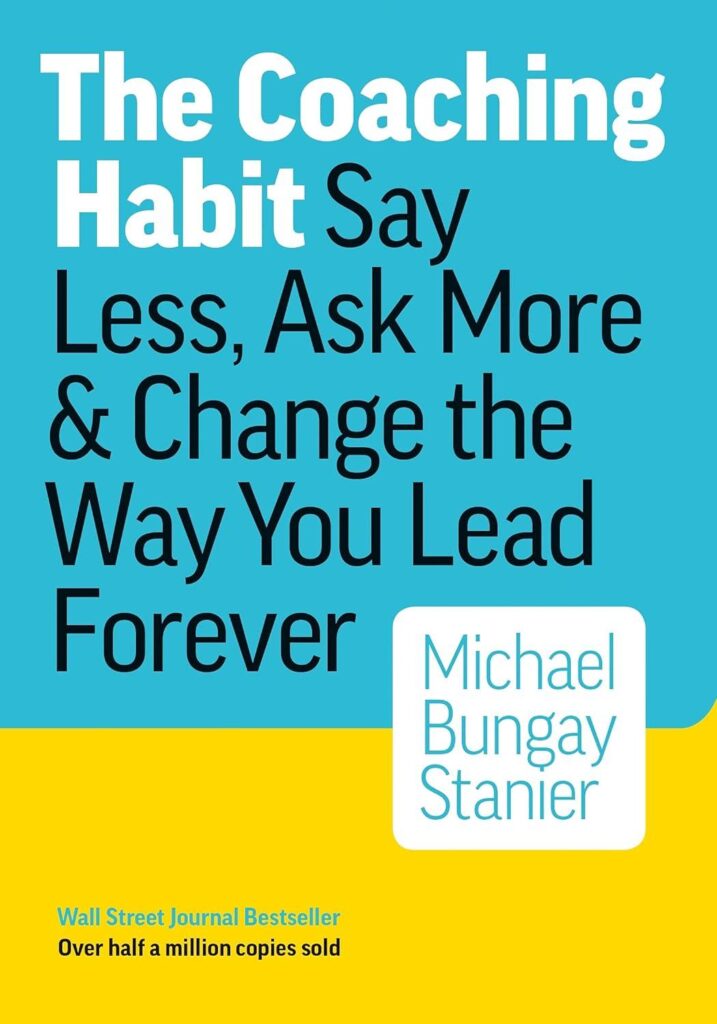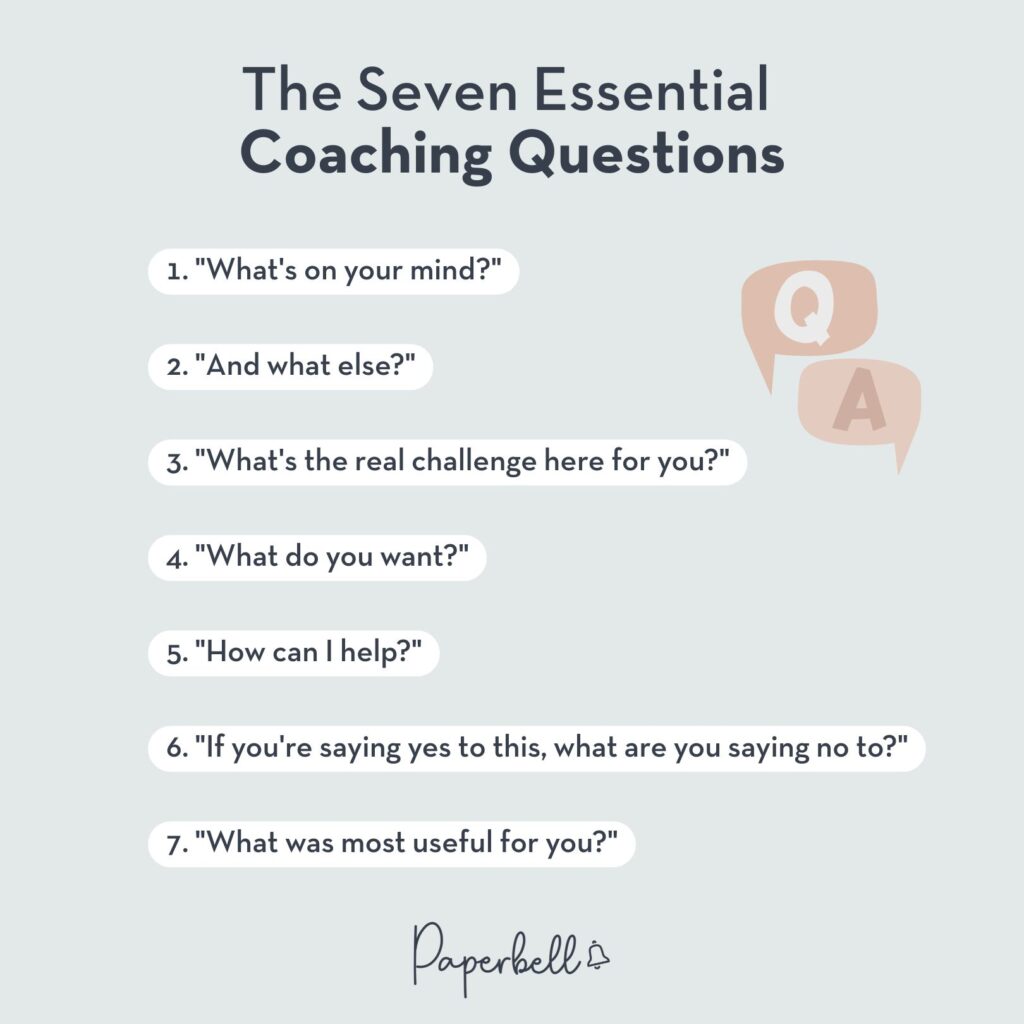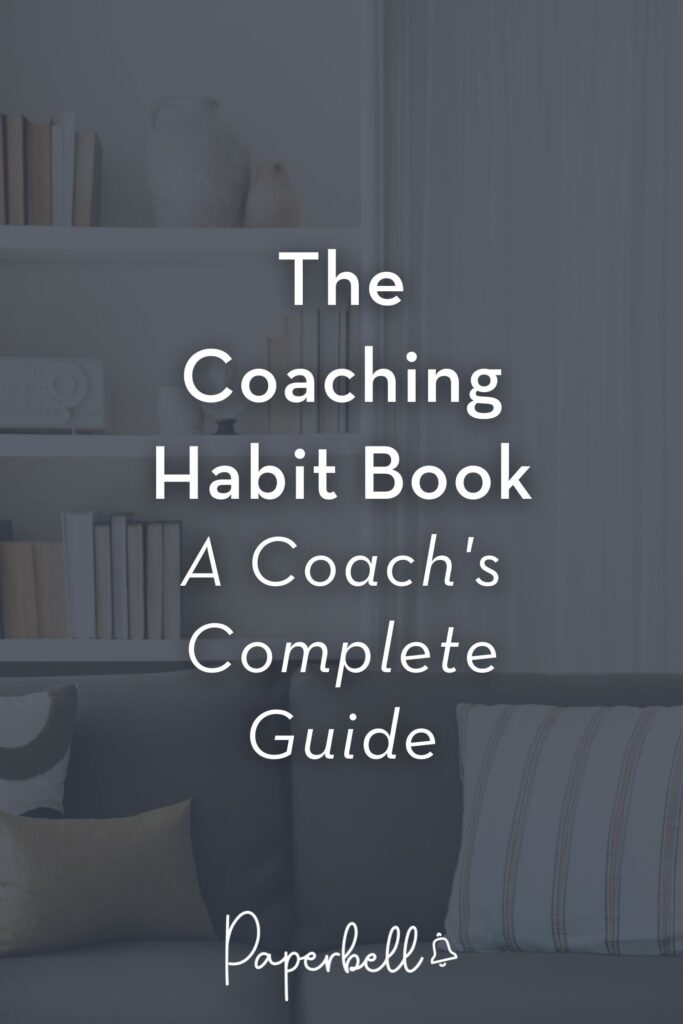If you’re a coach who finds yourself giving advice when you should be asking questions or rushing to solve problems before fully understanding the problems at hand, The Coaching Habit Book is for you.
The book offers a practical framework that will transform your coaching skills and the way you lead forever. It helps you ask better questions, hold space for reflection, and develop deeper coaching conversations.
In this guide, we’ll look at its core concepts and help you decide if it deserves a spot on your coaching bookshelf.
What is The Coaching Habit Book?

Michael Bungay Stanier is an award-winning speaker and author of the best selling book, The Coaching Habit, published in 2016.
He’s also the founder of Box of Crayons (a company that helps organizations develop coaching cultures), where he has worked with some of the biggest brands in the world, such as Microsoft, Salesforce, and Upwork.
The Coaching Habit book has a simple central premise. Most managers and leaders think they’re coaching when they’re just giving advice in disguise.
But, by learning to ask a few key questions and waiting for the answers, anyone can become more coach-like in their interactions.
The Coaching Habit Book Summary
At its core, this book presents a coaching methodology centered around seven powerful questions.
The Seven Essential Coaching Questions
These questions are designed to cut through the noise and get to what really matters.
1. The Kickstart Question: “What’s on your mind?”
This question creates space for the other person to bring up what’s truly important to them, not what they think you want to hear.
It helps people focus on what Stanier calls “the 3 Ps.”
- Projects (content-related challenges)
- People (relationship challenges)
- Patterns (recurring behaviors or thoughts that may be limiting effectiveness)
It immediately shifts ownership of the coaching conversation to the other person.
2. The AWE Question: “And what else?”
The AWE (“And What Else?”) question acknowledges that the first answer is rarely the only answer, and often not the best one.
With this prompt, you create space for deeper exploration, better ideas, and more complete information.
3. The Focus Question: “What’s the real challenge here for you?”
This helps people identify what actually needs addressing. It guides coaching when conversations start to meander or when someone is avoiding the core issue.
The word “real” focuses on the most important issue amidst many challenges, while the word “you” ensures personal ownership of the problem rather than deflecting to external factors.
4. The Foundation Question: “What do you want?”
Many people never clearly state what they want in a situation. This question brings clarity to desires and goals to drive action.
Stanier notes that this question can feel uncomfortable to ask and answer, but that discomfort often signals its importance.
5. The Lazy Question: “How can I help?”
This simple prompt prevents you from jumping in with unnecessary or unwanted help.
When you ask how you can help instead of assuming you know what’s needed, you honor the other person and often discover that they need much less from you than you might have guessed.
6. The Strategic Question: “If you’re saying yes to this, what are you saying no to?”
This question acknowledges the reality of limited resources—time, energy, attention, and money. It forces prioritization and allows people to cut out what they don’t need.
What project will they let go of? What boundaries will they set to achieve this? What habits will they break?
Helping people recognize what they need to give up to pursue certain goals enables them to make more conscious, strategic decisions.
7. The Learning Question: “What was most useful for you?”
This final question creates reflection and cements learning moments. It turns a conversation into a memorable experience with useful lessons.
Moreover, it gives you feedback about which parts of your coaching approach were most valuable.

Key Principles from The Coaching Habit
Beyond the seven questions, Stanier talks about several fundamental principles for effective coaching:
Taming the advice monster
Most leaders have been rewarded throughout their careers for having answers. This creates an “advice monster” that suggests solutions prematurely, robbing others of ownership and growth opportunities.
The book gives practical tactics for taming this monster, such as counting to three before responding and consciously noting when you feel the urge to give advice.
Creating coaching moments in everyday conversations
Rather than viewing coaching as a formal, scheduled activity, Stanier encourages readers to see every interaction as a potential coaching moment.
The “coaching in 10 minutes or less” approach makes the practice sustainable in busy work environments.
Building coaching into your daily routine
The book draws heavily on habit-formation research and shares strategies for embedding these new coaching behaviors until they become automatic.
Here’s a habit-building formula Stanier provides:
- Identify the trigger
- Identify the old habit
- Create the new habit
- Then, practice and reward yourself
Should I Read It as a Coach?
The Coaching Habit is a great resource for both new and established coaches, as well as leaders and managers seeking to develop their teams.
At approximately 200 pages, you can absorb the core concepts in an afternoon (say 3-4 hours).
The book’s approach creates a distinctive coaching presence characterized by curiosity rather than expertise. This shift strengthens the coaching relationship as clients feel genuinely heard and involved rather than merely advised.
Real Examples of Coaches and Companies Implementing These Methods
- Telus realized a 459% return on investment, and team members developed a strong sense of empowerment and time savings.
- Matt Croker obtained several insights during his coaching sessions beyond what he’d normally get.
- Brands like Microsoft, Salesforce, and Gucci are creating a more interactive coaching culture, thanks to this method.
How Paperbell Can Help You Implement Principles from the Book

With Paperbell, you can integrate Stanier’s methodology into your client engagement processes by:
- Uploading pre-session questionnaires and coaching workbooks containing these seven questions to your client portal.
- Improving accountability by scheduling regular coaching calls and reflection periods.
- Automating reminders for these coaching sessions
Even more, Paperbell handles not just client management but also website setup and administrative tasks. Create a free Paperbell account.
Other Book Alternatives
While “The Coaching Habit” deserves its place on any coach’s bookshelf, you can consider these resources:
Similar coaching methodology books:
- Co-Active Coaching by Henry Kimsey-House et al. — Explores coaching as a relationship that empowers clients to find their own answers.
- Humble Inquiry by Edgar & Peter Schein — Shows how to ask questions that build trust and genuine curiosity instead of interrogating.
Complementary resources to read afterward:
- The Advice Trap by Michael Bungay Stanier — Tackles the habits that cause coaches to give advice when they should be asking questions.
- Mindset by Carol Dweck — Helps coaches understand the psychology behind growth and fixed mindsets.
Books that offer different coaching approaches:
- Presence-Based Coaching by Doug Silsbee — Teaches how mindfulness and self-awareness create more impactful coaching relationships.
- Positive Intelligence by Shirzad Chamine — Introduces mental fitness exercises to quiet negative thoughts and strengthen positive capabilities.
Here are more life coaching books and sales books to add to your collection.
FAQs About The Coaching Habit
What is The Coaching Habit summary?
The Coaching Habit teaches coaches and leaders to coach more effectively by asking seven specific questions and resisting the urge to offer advice too quickly.
What are the coaching habits in the book?
The specific habits include asking the seven essential questions, staying curious longer, being comfortable with silence, and recognizing when your “advice monster” is taking over.
How long does it take to read The Coaching Habit?
Most readers can complete the book in 3-4 hours. It’s a quick read, though implementing the practices takes longer.
What are the best books about coaching?
The “best” coaching books depend on your specific context. For executive coaching, “Co-Active Coaching” and “Coaching for Performance” are widely respected. For life coaching, “Becoming a Professional Life Coach” by Williams and Menendez is excellent.
Making The Coaching Habit Your Own
If you’re ready to transform your coaching practice by asking better questions and truly listening to the answers, The Coaching Habit book provides an excellent roadmap. Building any new habit requires structure and accountability. If you want to streamline your package creation, onboarding, and client management processes, try Paperbell for free.










